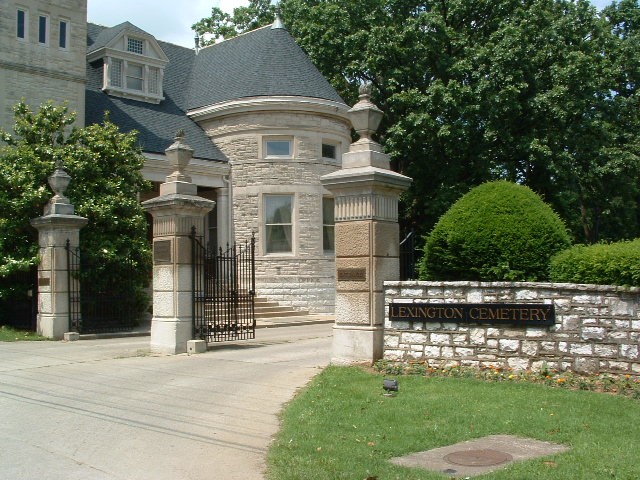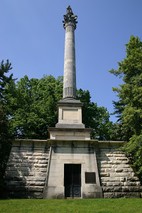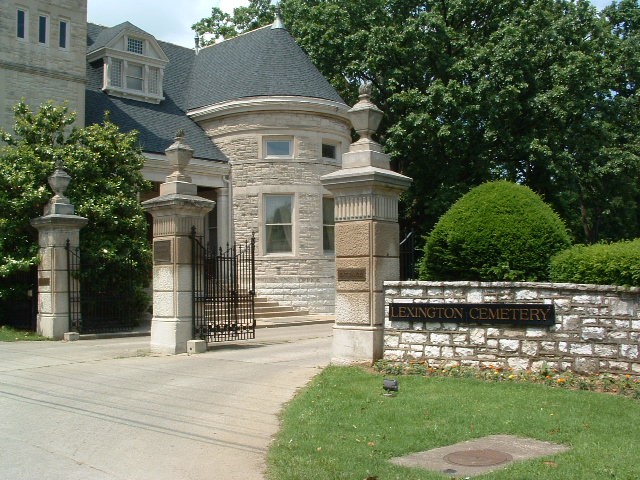This entry includes a walking tour! Take the tour.
Introduction
Author-Uploaded Audio
Listen to a narration of this entry's description by Clio Admin.
Text-to-speech Audio
Images
The Lexington Cemetery was created in 1849 and is nationally renowned for its gardens and arboretum.

A monument for Henry Clay located in the Lexington Cemetery. Henry Clay is one of several notable Kentuckians buried here.


Backstory and Context
Author-Uploaded Audio
Listen to a narration of this entry's description by Clio Admin.
Text-to-speech Audio
By the 1840s, most of the cemeteries in Lexington were either full or not well-tended. At the same time, a trend of parklike cemeteries that people could enjoy beyond paying respects to loved ones spread throughout the East and Midwest. A charter to create such a cemetery in Lexington was approved in 1848. The next year, a board raised the necessary funds to buy a forty-acre plot of land at the edge of the city. The land was already home to a small family graveyard, which was subsequently marked off as Section A of the cemetery.
Local gardener Charles S. Bell was hired as superintendent of the cemetery and began laying out the sections, roads, and lots of the cemetery. The first burial in the new cemetery took place in October 1849. A decade later, an adjoining tract of land was added to the cemetery, which continued to expand over the coming decades. To keep the cemetery open and airy, lot owners were asked not to build fences or other obstructions around their lots, as had been the norm in other cemeteries. Keeping the lots open allowed caretakers to easily access and maintain graves, an important task in helping the Lexington Cemetery compete with others.
Big changes came to the Lexington Cemetery in the following decades. In 1884, the cemetery’s trustees purchased a tract of land that included a rock quarry, providing gravel for the cemetery’s roads. In 1890, the entrance to the cemetery was torn down and replaced with a stone chapel and an office structure that stands in part today. During the Spanish Influenza pandemic that followed World War I, cemetery employees worked day and night to accommodate record numbers of burials (about three to four times the normal amount).
Many notable Kentuckians have been buried in the Lexington Cemetery. Soldiers from both sides of the Civil War and from the Spanish-American War were interred here. Others include Vice President John C. Breckinridge and author James Lane Allen. Henry Clay, a longtime Congressman from Kentucky, was also buried in the cemetery. His gravesite features a one-hundred twenty-foot column topped with a statue of him.
Sources
Clark, Thomas. History of The Lexington Cemetery. The Lexington Cemetery. Accessed March 23, 2019. http://www.lexcem.org/index.php/2012-12-26-14-45-57/cemetery-history?id=112.
Lexington Cemetery. National Park Service: Lexington, Kentucky: The Athens of the West. Accessed March 23, 2019. https://www.nps.gov/nr/travel/lexington/lce.htm.
Lexington National Cemetery. U.S. Department of Veteran Affairs. Accessed March 23, 2019. https://www.cem.va.gov/cems/nchp/lexington.asp.
